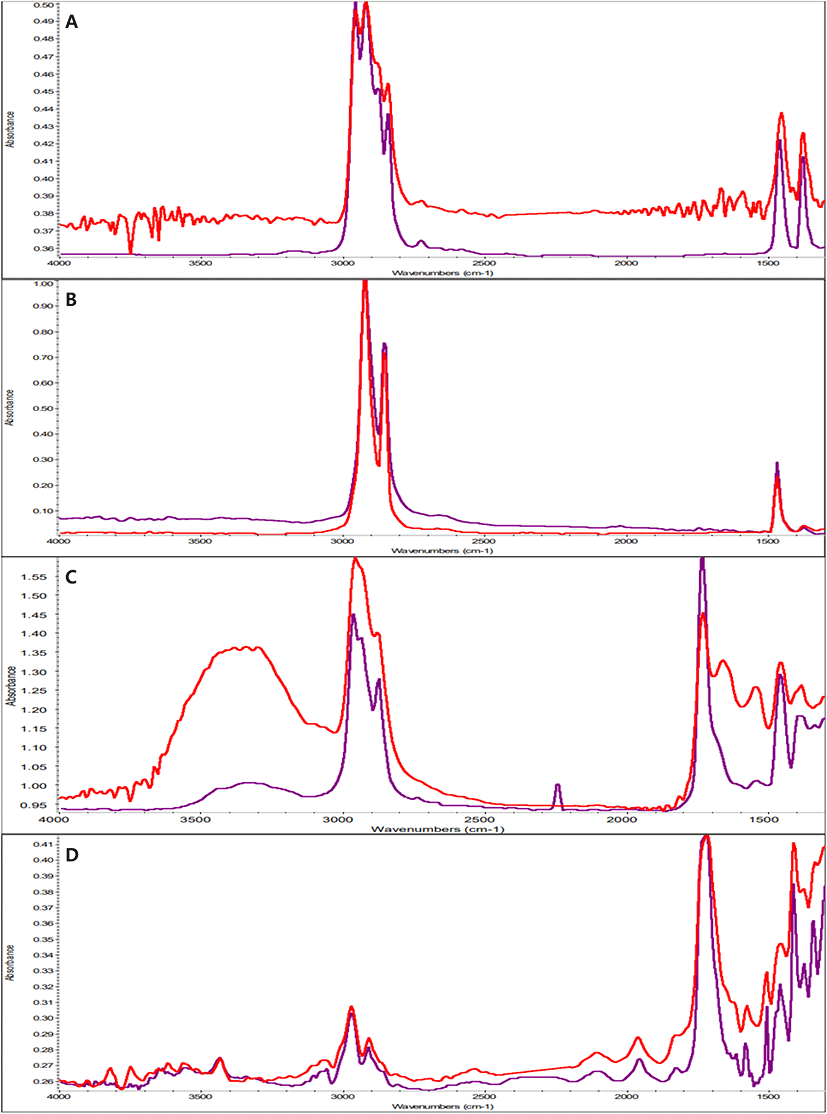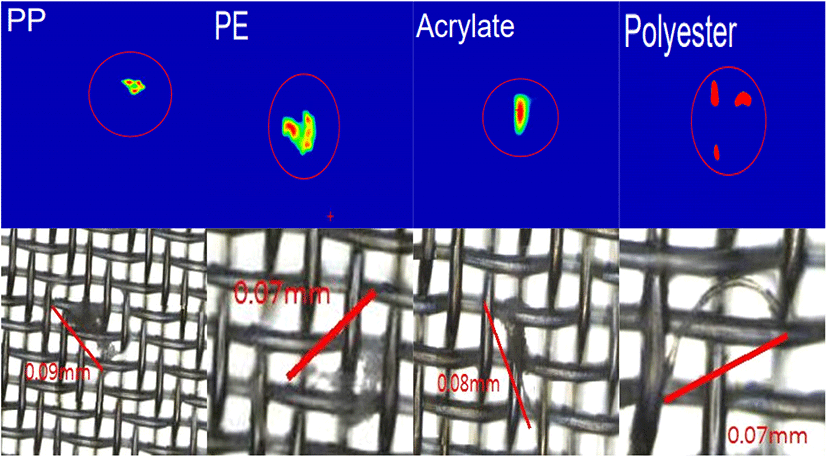서 론
피조개는 고막류 중 가장 중요한 국내 생산 종으로 우리나라 전 연안의 깊은 수심에 서식한다(Park 등, 1998). 고막류 중 피조개는 크기가 가장 크고 육질이 연하며 맛이 좋아 남해안에서 양식되고 있다(Park 등, 1998). 과거 피조개는 단백질 보충원으로 이용되었지만, 최근 생리활성에 대한 기능성이 보고되고 있다(Kim 등, 2014; Kang, 2017). 피조개는 전체 지방산 중 다가 불포화지방산이 35.5%를 차지하며(National Fisheries Research Development Institute, 2019), 글루탐산이 205 mg/ 100 g, 타우린이 628 mg/ 100 g, 유리 아미노산이 1,966 mg/100 g 함유되어 있다(Park, 2002). 피조개의 생리활성이 밝혀짐에 따라 생산량은 2006년 2,212톤에서 2017년 4,524톤으로 약 2배 증가하였다(Korea Rural Economic Institute, 2018). 그러나 2011년 소비자 1,000명에게 식품안전 인식을 조사한 결과, 육류, 채소류, 패류 중 패류에 대한 안전성에 대해 가장 큰 우려를 나타났다(Trend Monitor, 2011). 또한, 패류는 여과섭이 활동을 통해 해수에 존재하는 중금속, 유해화학물질 등을 섭취하고 체내에 축적하여 식품안전의 위해요소로 작용할 수 있다고 보고되고 있다(Cliver, 1988; Chen 등, 2008).
플라스틱 생산량은 전 세계적으로 꾸준히 증가하여 2012년 전 세계 플라스틱 생산량은 2억 8천 톤으로 지난 60년 사이 170배 증가하였다. 이러한 추세로 플라스틱 생산량이 증가한다면 2050년에는 그 누적량이 330억 톤에 이를 것으로 전망되고 있다(Birol, 2018). 플라스틱 생산량의 증가와 함께 해양으로 배출되는 플라스틱의 양 또한 증가하여 해양쓰레기 중 플라스틱 비율이 60–80%를 차지하고 있다(Derraik, 2002). 미국 해양대기관리처는 플라스틱 중에서도 5 mm 미만의 플라스틱을 미세플라스틱(microplastic, MP)이라 정의하고 있다(Santos와 Duarte, 2015). 세계자연기금의 플라스틱 인체 섭취평가 연구에 따르면 한 사람이 일주일간 섭취하는 미세플라스틱의 양은 5 g이라고 보고하고 있다(World Wide Fund for Nature, 2019).
미세플라스틱 분석방법은 유기물 분해, 비중 분리, Fourier transform infrared(FT-IR)를 이용한 분석이 가장 일반적으로 사용되는 실험방법이다(Andrady, 2011; Lee와 Kim, 2017; Shim 등, 2017a). 시료에 포함된 유기물질 등은 미세플라스틱의 정성 및 정량 분석 시 방해물질로 작용할 수 있어 유기산을 이용하여 제거한다(Lee와 Kim, 2017). 비중 분리는 미세플라스틱과 다른 오염물질의 밀도 차이를 이용해 미세플라스틱을 분리한다(Chae 등, 2014). FT-IR은 적외선 영역의 빛이 시료에 입사되어 시료와 상호 작용하는 빛의 투과율과 반사율을 측정함으로써 시료의 정성분석이 가능한 분광법이다(Lee 등, 2016).
플라스틱은 생산과정 중 화학적, 물리적 성질을 극대화하기 위해 bisphenol-A, phthalates, tetrabromobisphenol A 등의 화학물질을 첨가한다(Mato 등, 2001). 플라스틱의 가소제, 안정제 등으로 사용되는 bisphenol-A, phthalates, tetrabromobisphenol A 등의 유해화학물질은 플라스틱이 분해되면 환경에 용출되어 독성물질로 작용하고 있다(Cole 등, 2011). 또한, 작게 분해된 미세플라스틱의 공극에 중금속을 포함한 무기화학물질(Chae 등, 2014)과 유기화학물질이 다양하게 흡착되는 것으로 보고되고 있다(Teuten 등, 2007). 크기가 2–3 mm의 polypropylene(PP) 펠릿은 잔류 유기오염물질(persistent organic pollutants, POPs)을 해수보다 105배 이상 흡착하고 있다(Mato 등, 2001). 잔류 유해물질에 오염된 미세플라스틱을 해양 생물이 섭취할 경우 가장 큰 피해는 먹이사슬의 최종 단계에 있는 인간이다. 미세플라스틱 오염 예방은 해양생태계 보호뿐만 아니라 식품안전과 직결되는 문제이다(Moore 등, 2002; Browne 등, 2008). 그러나 현재까지 미세플라스틱 오염에 대한 연구는 매우 미약한 실정이다. 따라서 본 연구에서는 시중에 유통 중인 피조개에 대한 미세플라스틱 잔류실태를 조사하여 식품 안전관리 방안의 기초자료로 활용하고자 하였다.
재료 및 방법
본 실험에 사용된 재료는 전라남도 일부지역 시장에서 판매되는 피조개를 3곳에서 구매하였으며, 구입된 각각의 피조개 중 5개씩 취하여 실험에 사용하였다. 각각 5개의 중량이 유사하도록 피조개를 선택하였다.
유기물 분해와 체거름은 Kim 등(2019)의 보고에 따라 실험하였다. 각각 5마리 피조개에서 추출한 가식부를 1 L 비커에 넣은 후 10%-KOH(Daejung, Siheung, Korea) 용액 500 mL를 첨가하여 약 40℃의 항온수조(WB-20M, Jeiotech, Daejeon, Korea)에서 2시간 간격으로 교반하며 48시간 정치시켰다. 육안으로 유기물 제거 정도를 확인한 후 100 μm체(Test sieve, Chunggey industrial, Gunpo, Korea)에 걸러 증류수로 세척하였다.
비중 분리는 Kim과 Kim(2015)의 방법에 따라 체에 걸러진 입자를 NaCl용액(Daejung)을 이용하여 분액깔대기에 옮긴 후 12시간 정치시켰다. 침전된 불순물을 2시간 간격으로 2번 제거하였다. 비중 분리된 시료를 공극이 45 μm인 여과지(Mesh filter, Taemyong Science, Uiwang, Korea)로 감압 여과한 뒤, 여과지를 유리제 petridish 담아 실온에서 건조시켰다.
건조한 여과지를 Andrady(2011)의 방법에 따라 FT-IR (iN10 MX, Thermo Fisher, Waltham, MA, USA)을 이용하여 분석하였다. 여과지를 시료 분석구에 장착한 후, 분석 면적을 미세하게 구획하였다. 각각의 구획에서 발견된 particle 수를 정량분석의 결과로 활용하였으며, particle의 스펙트럼을 분석한 후 library 검색을 통해 재질을 판별하였다. Library 검색결과, hit quality>700 이상인 경우 동일한 재질로 판정하였다(Chae 등, 2015).
결과 및 고찰
각각 피조개의 미세플라스틱 잔류량은 Table 1에 나타내었고, 재질별 microplastic의 사진과 스펙트럼은 Figs. 1–2에 나타내었다. 피조개 A의 가식부는 33.0±3.2 g으로 총 4개의 미세플라스틱이 검출되어, 한 개 피조개 당 0.8 MP/Individual로 나타났고, 재질은 PP 1개, PE 2개, epoxy 1개로 분석되었다. 피조개 B의 가식부는 32.0±2.7 g으로 총 6개의 미세플라스틱이 검출되어, 한 개 피조개 당 1.2 MP/Individual로 나타났고, 재질은 PP 2개, PE 2개, polyester 2개로 분석되었다. 피조개 C의 가식부는 31.1±4.0 g으로 총 8개의 미세플라스틱이 검출되어, 한 개 피조개 당 1.6 MP/Individual로 나타났고, 재질은 PP 1개, PE 3개, polyester 2개, acrylate 2개로 분석되었다.

본 실험에서 사용한 FT-IR 분석법은 가장 일반적인 미세플라스틱 분석방법으로 Nile red 염색법(Kim 등, 2018), Raman spectroscopy(Ryu와 Cho, 2019) 등 타 실험법과 비교 시 플라스틱 유사 입자에 대한 확인이 가능하여 오탐지 가능성이 없는 비파괴 분석법이다(Shim 등, 2017b). 본 실험에 사용된 피조개의 미세플라스틱 잔류량의 평균은 1.2±0.4 MP/Individual로 나타났다. 본 실험 결과와 캐나다 Baynes Sound에서 채취한 바지락에서 미세플라스틱 잔류량이 평균 8.4±8.5 MP/Individual로 나타났다는 보고(Davidson과 Dudas, 2016)와 중국 남부에서 채취한 굴의 미세플라스틱 잔류량이 최대 9.08±5.70 MP/Individual로 검출되었다는 보고(Teng 등, 2019)와 비교 시 상대적으로 낮은 잔류량을 나타내었다. 본 실험결과, 시중 유통 중인 피조개의 미세플라스틱 오염도는 낮은 것으로 판단되나 미세플라스틱은 유해화학물질을 흡착하여 해양 생물을 오염시키고 먹이사슬의 최종 단계인 인간에게까지 악영향을 미칠 수 있다. 또한, 초미세플라스틱을 섭취하면 세포 소기관인 미토콘드리아까지 침투하여 세포 활성을 저하시키고, 다른 물질에 의한 독성을 증폭시키는 역할을 할 수 있다고 보고되고 있다(Lee 등, 2019). 실험결과, 모든 시료에서 PP와 PE가 검출되었는데, 이는 플라스틱 종류 중 가장 밀도가 낮아(Lee와 Kim, 2017) 비중 분리 과정에서 손실이 적고, 수심이 낮은 갯벌에서 피조개를 양식(Kim 등, 2007)하기 때문에 PP와 PE의 검출률이 높은 것으로 판단된다. 따라서 시중 유통 중인 수산물의 미세플라스틱 잔류량을 주기적으로 모니터링하여 수산물에 의한 미세플라스틱 섭취를 저감화하여야 할 것으로 판단된다.

